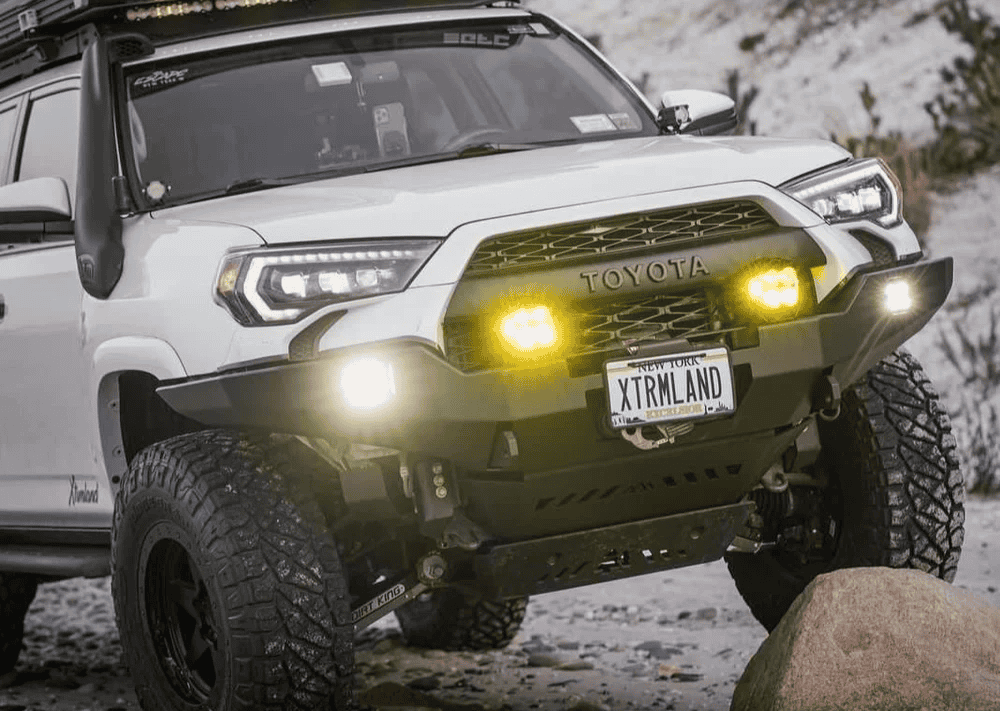Overland Vehicles

An adventure truck builder turns a capable pickup or chassis cab into a dependable travel partner that can handle rough trails and long distance routes. The job begins by matching the platform to the mission. Payload rating, axle ratio, wheelbase, approach and departure angles, and locker availability shape what the truck can safely carry and where it can go. A builder measures real weights with people, water, fuel, and cargo on board, then chooses suspension and braking that keep control predictable. The goal is not a showpiece, but a machine that tracks straight on washboard, stays cool on steep grades, and keeps passengers comfortable after hours of corrugations.
Tires and wheels are chosen for the terrain and weight. Larger rubber adds clearance but increases unsprung mass and changes gearing, so a professional considers transmission shift logic, cooling capacity, and brake performance. Skid plates protect vital parts while keeping service access in mind. Recovery points are mounted to structure, not just cosmetic bumpers, and a winch is sized for the gross weight with safe rigging in mind.
Inside the bed or habitat, builders chase a simple principle: a place for everything and nothing rattles. Cargo systems lock heavy items low and forward to protect handling and to prevent projectiles in a hard stop. Dust sealing matters more than people expect; pressurization vents, proper door seals, and thoughtfully routed wiring keep fine silt out of drawers and electronics. Good builders approach every fastener and hinge as if it will see years of vibration and still need to work with a gloved hand in the rain.
Materials set the tone for durability and serviceability. Aluminum and stainless resist corrosion and can be repaired on the road by many shops. Marine grade plywood and composite panels offer strength with reasonable weight when sealed correctly. Rivnuts and threaded inserts allow repeatable service without stripping. Wherever possible, the builder avoids trapping moisture and provides drainage and airflow to keep components cool and dry.
Power systems are the heartbeat of a modern expedition truck. Lithium batteries paired with a high output alternator, a quality DC to DC charger, and right sized solar give quiet energy for fridges, lights, fans, and communications. A clean layout with labeled fuses and breakers makes field diagnosis fast. Inverters are sized for real appliances, not just peak numbers. Lighting is targeted and dimmable, with separate zones for camp, work, and driving.
Water is both comfort and safety. Tanks are secured within the center of mass and away from rock strikes. Food grade plumbing, filtration at the fill and at the tap, and a simple drain plan keep the system healthy. Hot water can come from heat exchangers or compact heaters, but controls and venting must be installed with safety first. Climate control follows the same logic. Insulation that does not trap moisture, well sealed doors, and smart venting reduce condensation and keep cabins quiet.
Navigation and communications complete the package. Reliable mapping and a clear dash layout reduce fatigue. Many travelers carry GMRS radios to talk with groups, and satellite devices for weather and emergency contact. Some add satellite internet for work on the move, which demands clean power and secure mounting.
A strong adventure truck builder listens before sketching. They ask about range, seasons, passengers, toys you carry, and the exact places you want to reach. Good builders show their math on weight and center of gravity, share service guides, and plan for parts you can find in small towns. They prototype layouts with tape or cardboard so you can test reach and flow before a single hole is drilled. That is how rattles are prevented and how storage actually fits your skis, recovery gear, or camera cases.
If you are considering overland style capability, explore the options and language used by experienced teams. See how an outfit defines the balance of comfort and capability on their overland rigs page. When a builder offers a clear menu of structural upgrades, power integration, storage systems, lighting, and comms, that usually means they have repeatable processes behind the scenes. A focused service like a custom overland upfit can be ideal when your base truck is already chosen and you need a targeted transformation rather than a full tear down.
In Fayetteville Arkansas, OZK Customs builds trucks and vans that fit real travel, not just parking lot photos. Their team came out of the lifestyle and brings that field sense into every plan. You can see how they think about build quality, handoff, and owner education on why choose OZK Customs. From chassis protection and suspension tuning to clean electrical, water, and secure storage, they build to your route and your pace.
A well planned adventure truck is more than parts. It is a system. Start with the mission. Choose a platform that can carry the load. Keep the center of gravity low, the power simple and serviceable, the water clean, and the storage quiet. Add recovery and communications that you know how to use. Then drive it often, adjust what needs to change, and keep a short log of service and upgrades so the rig stays ready.
If the next step is to turn your ideas into a clear scope and price, reach out to OZK Customs. Share your terrain, your crew size, and how many nights you want off grid, and their team will outline a build that fits your time frame and budget while keeping the truck easy to service anywhere you roam.
Ready for a rig that fits your terrain, crew, and gear without compromise? Tell us how you travel and we will map the build, budget, and timeline. Tap the form and let OZK Customs turn your wish list into a trail proven truck.
ADDRESS:
6159 E Huntsville Rd, Fayetteville, AR 72701
PHONE:
(479) 326-9200
EMAIL:
info@ozkvans.com